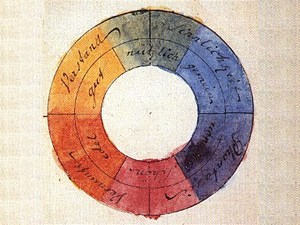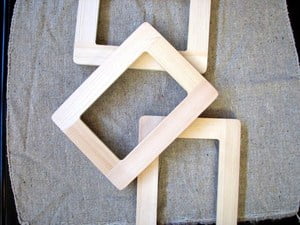It’s happened to the best of us. We go shopping, searching for those delightful goodies to add new life to rooms. Of course, everything has to match. We find absolutely perfect items, and are sure the colors are perfect. We are confident in our selections, ready to add that special touch to every room in the house. Then the unthinkable happens. You arrive home, unload your treasures, only to discover the newly bought items don’t match your colors in the home.
How could this have been prevented? There’s a rather simple solution to be positive that will not occur again. You need a Fabric And Paint Chip Notebook.
A Fabric And Paint Chip Notebook is easy and fairly quick to make, then keep updated. It holds samples of the colors throughout your home, such as walls and ceilings, curtains and drapes, linens, etc.
There’s more than one way to make one of these, and it doesn’t have to be in a notebook. You can change it to fit your particular likes and needs.
What To Do
First, you will need a small purse or pocket size spiral notebook, small blank 3 x 5 index cards cut in half or heavier stock paper, cut in small squares, a small paint brush, and something such as newspaper to paint on.
When you paint a room, before beginning the room, take a half of the 3 x 5 index card or square of stock paper, and paint one side of it with the paint you are about to use for the room. Make sure your surface is covered with the newspaper to prevent an accident. Allow this to dry. The reason I like to paint the sample first is that if I wait until after painting the room, I might run out of paint, or forget to make the sample.
Do this for each room or part of a room that you paint, each time, unless it is the exact same color. Once the sample is dry, tape or glue it into the notebook, and on the same page, write the paint color name, type of paint, such as latex or oil based, and the room or room area it was used on.
Fabrics can be done in the same manner. When you buy new drapes, for example, it is often hard to match colors. It doesn’t have to be difficult. Curtains and drapes usually have huge hems. You can carefully use sharp scissors, turn the curtain over to expose the hem area, and cut a small spot to place in your notebook. It is important not to cut through, of course. This also works well for some bed linens, but not always. If there is not enough of a hem to take a sample without it being obvious, I opt for no sample rather than ruining the piece.
While this might bother some, cutting a small area of their drapes and linens, it’s a nice idea when it comes to shopping for those matching colors, plus it saves many repeated and unnecessary trips back to the store for returns.
Wall paper samples are the easiest and most convenient to place in the notebook. Simply cut a small sample of the wall paper, place it in the notebook, and make a note of the name of it, perhaps even the place of purchase, and the room or room areas it’s located in.
Perhaps you’d like to buy color coordinated items to match wall decor. Some items, such as a painting, cannot have a sample taken from it to place in your Fabric And Paint Chip Notebook. One idea is to take a photo of the object with a digital camera, in good lighting, so that the finished photo’s colors match that of the actual object. You might print this off on good photo paper and add to your notebook, or keep with it.
Decorating the home can cause frustration to take the place of what should be a fun and exciting time. Don’t let mismatched colors bring you to the point of gloom and despair. Try making your own Fabric and Paint Chip Notebook.






